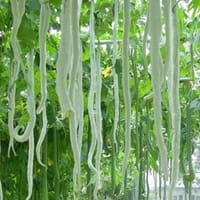Life Span
Perennial
Annual
Origin
Eastern Europe
India, Philippines, Southeast Asia
Types
Not Available
Not Available
Habitat
Terrestrial
Loamy soils, Moist Soils, Subtropical climates
USDA Hardiness Zone
4-9
5-7
Sunset Zone
1a, 1b, 2a, 2b, 3a, 3b, 4, 5, 6, 7, 8, 9, 10, 11, 12, 13, 14, 15, 16, 17, 18, 19, 20, 21, 22, 23, 24
A1, A2, A3, H1, H2, 1a, 1b, 2a, 2b, 3a, 3b, 4, 5, 6, 7, 8, 9, 10, 11, 12, 13, 14, 15, 16, 17, 18, 19, 20, 21, 22, 23, 24
Habit
Clump-Forming
Vining/Climbing
Flower Color
Yellow, Lavender, Blue Violet
Yellow, Orange, Dark Green
Flower Color Modifier
Bicolor
Bicolor
Fruit Color
Not Available
Yellow, Dark Green
Leaf Color in Spring
Green, Sea Green
Green, Dark Green
Leaf Color in Summer
Green, Sea Green
Green, Dark Green
Leaf Color in Fall
Green, Sea Green
Green, Dark Green
Leaf Color in Winter
Light Green
Not Available
Leaf Shape
Lanceolate
Palmate
Plant Season
Spring, Summer
Summer, Fall
Sunlight
Full Sun, Partial Sun
Full Sun
Growth Rate
Medium
Very Fast
Type of Soil
Loam, Sand
Loam, Sand
The pH of Soil
Neutral
Neutral
Soil Drainage
Well drained
Well drained
Bloom Time
Spring, Late Spring, Early Summer
Indeterminate
Tolerances
Drought
Drought
Where to Plant?
Ground
Ground
How to Plant?
By dividing rhizomes, tubers, Seedlings
Seedlings
Plant Maintenance
Medium
Medium
Watering Requirements
Average Water Needs, Do Not over Water
Keep ground moist, Requires regular watering
In Summer
Lots of watering
Lots of watering
In Spring
Moderate
Moderate
In Winter
Average Water
Average Water
Soil Type
Loam, Sand
Loam, Sand
Soil Drainage Capacity
Well drained
Well drained
Sun Exposure
Full Sun, Partial Sun
Full Sun
Pruning
Remove damaged leaves, Remove dead branches, Remove dead leaves
Cut out old flower stalks, Remove dead or diseased plant parts
Fertilizers
All-Purpose Liquid Fertilizer
Nitrogen, N-P-K balanced liquid fertilizer, Potassium
Pests and Diseases
Red blotch
Army-worms, Bacterial leaf spot, Blight, Cucumber beetles, Cucumber mosaic, Cutworms, Fusarium leaf spot, Red spider mite
Plant Tolerance
Drought
Full Sun, Salt and Soil Compaction
Flower Petal Number
Single
Single
Foliage Texture
Coarse
Coarse
Foliage Sheen
Matte
Matte
Attracts
Hummingbirds
Bees, Flies, Flying insects
Allergy
Skin irritation
Hypoglycaemic Coma, Irregular Heart Rhythm, Miscarriage
Aesthetic Uses
Showy Purposes
Not Used For Aesthetic Purpose
Beauty Benefits
Not Available
Glowing Skin, Moisturizing, Nourishes scalp
Environmental Uses
Air purification
Food for animals
Medicinal Uses
No Medicinal Use
Diabetes, Gastrointestinal disorders, Jaundice, Laxative, Leprosy, Weight loss
Part of Plant Used
Not Available
Fruits, Leaves
Other Uses
Used as Ornamental plant
Cosmetics, Culinary use, Repellent
Used As Indoor Plant
No
No
Used As Outdoor Plant
Yes
Yes
Garden Design
Alpine, Edging, Mixed Border, Rock Garden, Wall
Dried Flower/Everlasting, Vine
Botanical Name
IRIS pumila
Trichosanthes cucumerina
Common Name
Dwarf Iris
snake gourd, serpent gourd, chichinda, padwal
In Hindi
Dwarf Iris
चिचिण्डा
In German
Zwergiris
Schlangenhaargurke
In French
Dwarf Iris
Trichosanthes cucumerina
In Spanish
Enano Iris
snake gourd
In Greek
νάνος Ίρις
φίδι κολοκύθα
In Portuguese
Dwarf Iris
snake gourd
In Polish
Dwarf Iris
Gurdlina ogórkowata
In Latin
Iris Dwarf
snake gourd
Phylum
Magnoliophyta
Magnoliophyta
Class
Liliopsida
Magnoliopsida
Order
Liliales
Cucurbitales
Family
Iridaceae
Cucurbitaceae
Clade
Angiosperms, Monocots
Angiosperms, Eudicots, Rosids
Tribe
Irideae
Not Available
Subfamily
Iridoideae
Papilionoideae
Number of Species
Not Available
Season and Care of Dwarf Iris and Snake Gourd
Season and care of Dwarf Iris and Snake Gourd is important to know. While considering everything about Dwarf Iris and Snake Gourd Care, growing season is an essential factor. Dwarf Iris season is Spring and Summer and Snake Gourd season is Spring and Summer. The type of soil for Dwarf Iris is Loam, Sand and for Snake Gourd is Loam, Sand while the PH of soil for Dwarf Iris is Neutral and for Snake Gourd is Neutral.
Dwarf Iris and Snake Gourd Physical Information
Dwarf Iris and Snake Gourd physical information is very important for comparison. Dwarf Iris height is 10.20 cm and width 15.20 cm whereas Snake Gourd height is 60.00 cm and width 90.00 cm. The color specification of Dwarf Iris and Snake Gourd are as follows:
Dwarf Iris flower color: Yellow, Lavender and Blue Violet
Dwarf Iris leaf color: Green and Sea Green
Snake Gourd flower color: Yellow, Orange and Dark Green
- Snake Gourd leaf color: Green, Dark Green
Care of Dwarf Iris and Snake Gourd
Care of Dwarf Iris and Snake Gourd include pruning, fertilizers, watering etc. Dwarf Iris pruning is done Remove damaged leaves, Remove dead branches and Remove dead leaves and Snake Gourd pruning is done Cut out old flower stalks and Remove dead or diseased plant parts. In summer Dwarf Iris needs Lots of watering and in winter, it needs Average Water. Whereas, in summer Snake Gourd needs Lots of watering and in winter, it needs Average Water.





